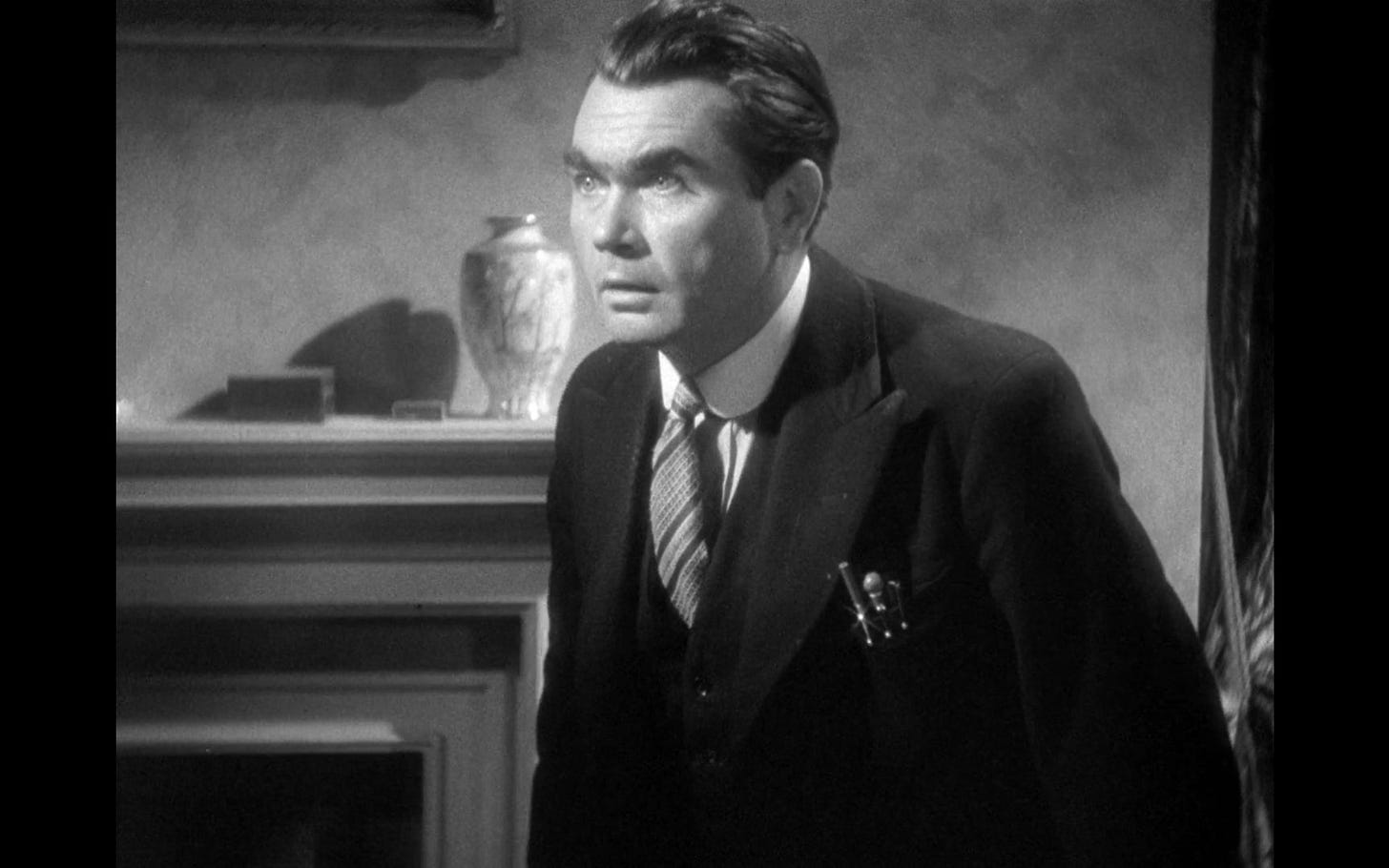This week we’re watching Sabotage (released in the U.S. as The Woman Alone), which is the fourth entry in Hitchcock’s “Classic Thriller Sextet” made before he left for Hollywood. It’s based on Joseph Conrad’s 1907 novel The Secret Agent, though it bears no relation to Secret Agent (which we watched last week) or Saboteur (a later Hitchcock movie).
I’ve devoted much of this series to describing what Hitchcock’s films are about: they primarily concern a protagonist or group trying to clear their name in a criminal conspiracy against them. And if you’ve been reading along, or have a passing familiarity with these films already, you know this formula pretty well. What we haven’t talked about enough is how these films are about what they’re about.
There’s a fantastic shot-by-shot analysis of a famous scene from Sabotage in Hitchcock, the book-long interview conducted by François Truffaut that I’ve cited as a primary source for this series, that perfectly encapsulates how Hitchcock approaches scene-work and what’s he’s most interested in. Rather than explain this film’s premise, I’ve simply included this excerpt in its entirety with screen captures to illustrate their discussion. If this is your first time watching Sabotage, and are hoping to enjoy it unspoiled, I recommend waiting to read until after you’ve watched.
Sabotage is currently streaming on Amazon Prime, HBO Max, and the Criterion Channel.
Truffaut: The best scene in Sabotage is during the meal, toward the ending, when, following her brother’s death, Sylvia Sidney [as Mrs. Verloc] decides to kill Oscar Homolka [as Karl Verloc]. Before this there are several visual incidents that evoke the dead child. Then, as she stabs her husband, she utters a little cry of pain, so that the scene almost suggests suicide rather than murder. It’s as if Homolka were allowing himself to be killed by Sylvia Sidney. Prosper Mérimée staged Carmen’s death on the same dramatic principle, with the victim thrusting her body forward to meet the slayer’s fatal stab.
Hitchcock: We had a problem there. You see, to maintain the public’s sympathy for Sylvia Sidney, her husband’s death had to be accidental. And to bring this off, it was absolutely essential that the audience identify itself with Sylvia Sidney. Here, we weren’t trying to frighten anyone; we had to make the viewer feel like killing a man, and that’s a good deal tougher.
This is the way I handled it. When Silvia Sidney brings the vegetable platter to the table, the knife acts as a magnet; it’s almost as if her hand, against her will, is compelled to grab it.
The camera frames her hand, then her eyes, moving back and forth between the two until suddenly her look makes it clear that she’s become aware of the potential meaning of that knife.
At that moment the camera moves back to Verloc, absently chewing his food on any other day.
Then we pan back to the hand and the knife.
The wrong way to go about this scene would have been to have the heroine convey her inner feelings to the audience by her facial expression. I’m against that. In real life, people’s faces don’t reveal what they think or feel. As a film director I must try to convey the audience by purely cinematic means.
When the camera is on Verloc, it pans to the knife and then back again to his face.
And we realize that he, too, has seen the knife and has suddenly become aware of what it may mean to him. Now the suspense between the two protagonists has been established, and the knife lies there, between them.
Thanks to the camera, the public is now actually living the scene, and if that camera should suddenly become distant and objective, the tension that’s been created would be destroyed. Verloc stands up and walks around the table, moving straight toward the camera—
—so that the spectator in the theater gets the feeling that [they] must recoil to make way for him. Instinctively, the viewer should be pushing back slightly in [their] seat to allow Verloc to pass by.
Afterward, the camera glides back toward Sylvia Sidney—
—and then it focuses once more on the central object, that knife.
And the scene culminates, as you know, with the killing.
Truffaut: The entire scene is utterly convincing! Someone else might have ruined the whole thing merely by changing angles when Verloc rises to his feet, and placing the camera at the back of the room for a full shot before going back to the close shot. The slightest mistake, like the sharp pulling back of the camera, would dissipate all of that tension.
Hitchcock: That would ruin the whole scene. Our primary function [as directors] is to create an emotion and our second job is to sustain that emotion.
When a film has been properly staged, it isn’t necessary to rely upon the player’s virtuosity or personality for tension and dramatic effects. In my opinion, the chief requisite for an actor is the ability to do nothing well, which is by no means as easy as it sounds. [They] should be willing to be utilized and wholly integrated into the picture by the director and the camera. [They] must allow the camera to determine the proper emphasis and the most effective dramatic highlights.
Up Next
Next week, we watch Young & Innocent (1936), which is streaming on Amazon Prime and the Criterion Channel.
Cameo
There’s an unsourced claim on Wikipedia that he appears in front of the Bijou about 9 minutes in. The Hitchcock Zone, which I’m inclined to trust as the authority on this, indicates there’s no confirmed cameo.
References
Screen captures sourced from the Criterion Channel
Truffaut, Francois. Hitchcock. United States, Simon & Schuster, 1985.
The Alfred Hitchcock Wiki: The Hitchcock Cameos; https://the.hitchcock.zone/wiki/The_Hitchcock_Cameos


















